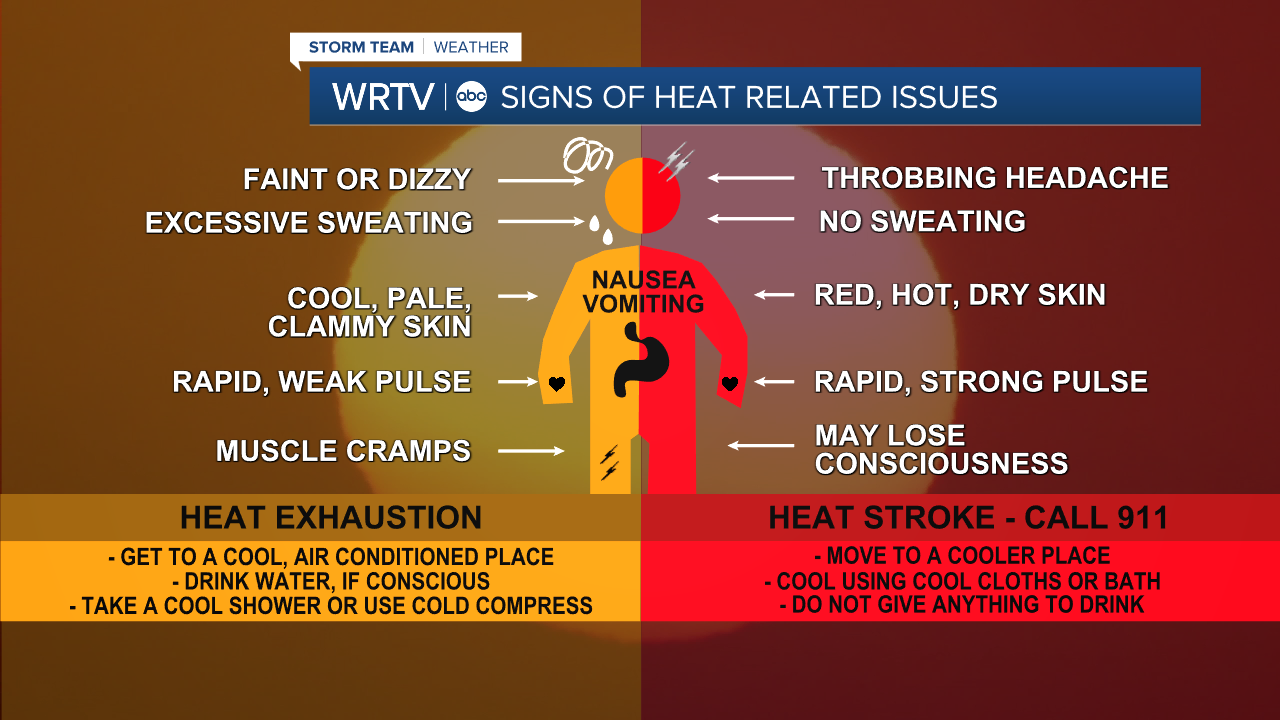As Central Indiana braces itself for yet another scorching week, residents are preparing for heat indices that may soar above 100 degrees by mid-week. With such sweltering conditions on the horizon, it’s crucial to understand the dynamics of heat and humidity and how they affect our health and the well-being of our furry friends.
Humans rely on a natural cooling mechanism, known as evaporative cooling, to regulate body temperature. When we get hot, our bodies sweat, and this sweat evaporates, providing a cooling effect. However, on humid days, the air is already saturated with moisture, making it difficult for sweat to evaporate. This results in a less effective cooling process, leaving many of us feeling hotter and more uncomfortable.
Dr. Holly Harding, a physician at IU Health Urgent Care, sheds light on the consequences of excessive heat and humidity. “When it’s hot outside, we do see a lot of heat-related illnesses,” she explained. “More specifically, when the humidity is high, we see a lot of heat exhaustion and heat-related illnesses.” This raises the question: How can you protect yourself from these potential health risks?
Proper planning can greatly mitigate the dangers of heat. Dr. Harding advises, “Make sure you’re staying nice and hydrated. If you have outdoor tasks, try to do them early in the day, before it gets too terribly hot outside.” Lightweight clothing can also help your body cope with oppressive conditions, making it easier to manage the heat.
Pay attention to early signs of heat-related illnesses as well. Symptoms like heat cramps or heat rash can often be treated at home by relocating to a shaded, cooler area and rehydrating. However, if you or someone around you experiences confusion or weakness, it’s essential to seek medical attention immediately.

WRTV
Interestingly, Dr. Harding notes that heat-related illnesses often peak at urgent care facilities during the first few days of a heatwave, as many individuals underestimate the risk involved. This emphasizes the importance of preparation and awareness as temperatures rise.
Pets, too, face significant risks during hot and humid weather, a concern articulated by Dr. Kristi Crow, a veterinarian at City Way Animal Clinics in Fountain Square. Unlike humans, dogs do not possess efficient self-cooling mechanisms. “They do have some cooling glands in their nose and in their paws, but not to a very high degree,” she stated. This puts them in a vulnerable position, particularly during periods of high humidity, where heatstroke can become a genuine threat.
It’s essential for pet owners to recognize the signs of heat strain in animals. Symptoms to watch for include excessive panting, difficulty breathing, confusion, and loss of coordination. Should any of these signs appear, getting your pet into a cooler environment immediately is crucial.
Dr. Crow also dispels a common myth: “A lot of pet owners think that you’re supposed to pour cold ice water on your pet if they get too hot, but that could actually be fatal.” Instead, she recommends cooling pets gradually using lukewarm water, starting from their paws and working up to the rest of the body at a slow pace. Pouring cold water directly onto a dog suffering from heatstroke might induce shock.
To ensure the safety of your pets, Dr. Crow suggests timing outdoor activities appropriately. “Keep walks early in the morning or late at night,” she advises. For breeds at greater risk—particularly those with short noses, like French bulldogs or English bulldogs—staying indoors during the heat of the day is the best option. Recognizing the signs of heat distress is crucial, especially for older dogs, younger pups, and overweight animals.
If you suspect that your pet is experiencing symptoms of heatstroke, it is vital to take action immediately. Gradual cooling strategies, coupled with a prompt visit to the veterinarian, can make all the difference in safeguarding your pet’s health during the sweltering summer months.

